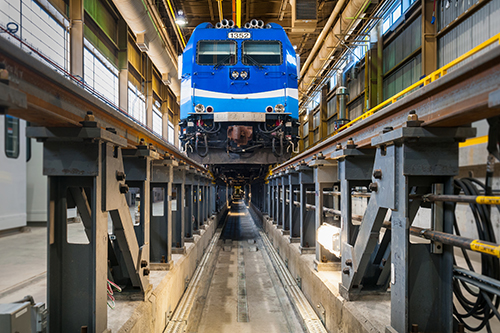Winter propulsion issues for MR-90 railcars
Monday, January 07 2019

Water, ice, snow: the consequences of winter on MR-90 propulsion systems
Learn how exo ensures the smooth operation of its train propulsion systems.
What is the propulsion system?
The propulsion system consists of all the components that provide the energy necessary to move the train (engines, electronic controls, transformers, etc.).
What affects the propulsion system?
In winter, water and ice can block the locomotives’ diesel engine air intakes and the housings that contain the components required for propulsion. They can also get into the actual components.
This can result in:
- Engines stopping on locomotives (insufficient air)
- Short circuits resulting in propulsion failures (the train won’t move)
- Mechanical breakdowns in the propulsion engines
- Damage to electronic components causing a propulsion failure
What does exo do in the event of a problem?
- These situations are detected by an on-board computer that generates alerts
- For your safety, the train is automatically stopped
- In most cases, the team on board is able to remedy the situation; if that is not possible, a technician will be dispatched on site
An ounce of prevention is worth a pound of cure!
To prevent problems from occurring, exo
-
As part of our winter plan, we’re increasing our staff in order to:
- Clear snow and ice from locomotive air intakes at all sites during snowstorms
- Quickly remove snow and ice if they get into critical components
-
We are currently upgrading several components on our MR-90 railcars:
- We’re replacing the propulsion component housing covers
- We’re weatherproofing the upper parts of the propulsion housings and auxiliary power units (APUs)
- We’re replacing the oldest electronic components and those affected by cold and moisture, as well as the housings for propulsion cooling fans
- We’re retrofitting engines according to their condition
Read on to learn about exo’s initiatives to improve the door, wheel and braking.
